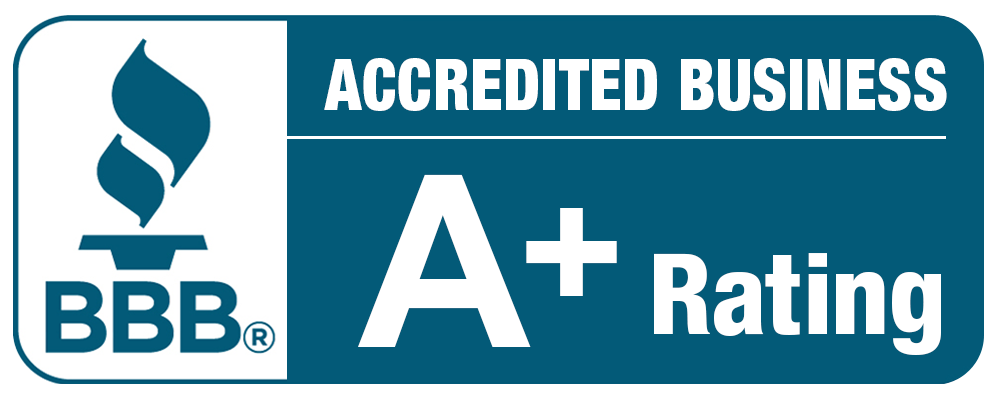When a small business fails, the negative ramifications can be substantial – jobs are lost, careers and reputations are damaged, the economy is burdened, and more. One of the best ways to help prevent small business failure is to maintain a closely-watched and sound budget. That said, managing one crucial aspect of the budget – payroll – can be a daunting task for even the most experienced company owner or entrepreneur.
When payroll budgets become untenable, unsupportable debt can be a serious concern for the business. Reducing said debt can be a priority in an effort to free up cash flow as soon as possible. But how do you know whether decreasing staff (and to what extent) will ultimately solve this issue or merely create more headaches?
Let’s look at what the experts say regarding whether a specific percentage of a small business’s budget should be spent on payroll. We’ll also review some of the most tried and true methods for keeping payroll below the ‘magic number,’ and discuss how National Credit Partners can help your small or medium-sized business obtain the debt relief or modification solutions needed to not just survive but thrive in an ever-competitive economy.
Payroll equals the total amount that a business pays for its labor. This can include salaries, bonuses, benefits, and owner draws. Depending on the industry, the amount a company spends on its payroll budget can vary significantly.
For example, automated production facilities and factories utilizing machine learning or artificial intelligence may have a much lower payroll budget than labor-intensive or service industry businesses (such as restaurants, hotels, theme parks, etc.). In fact, a select number of labor-intensive small and medium-sized businesses may successfully carry a payroll budget of between 40% and 50% (and trucking industry companies are known to see that figure increase as high as 60%).
However, while there isn’t a magic equation that can be applied, experts recommend a general ‘safe zone’ equaling a specific percentage of the budget that, for the majority of businesses, should be adhered to when calculating payroll.
Fill the form to request a free Business Debt Consultation Now!
By clicking “Continue” above, I understand and agree to the following terms and conditions:
As a general rule, the ‘safe zone’ for payroll expenses is anywhere between 15% and 30% of gross revenue. In other words, any business with a payroll exceeding 30% of gross revenue increases its chance of becoming insolvent and ultimately failing.
However, it’s important to realize that if too little of the budget is devoted to payroll expenses, the business could shutter at any moment (workers need to be paid). That said, too much of the budget devoted to payroll expenses can create a disaster that in effect overburdens the remaining funds that must be allocated for things like sales and revenue.
It’s a fine line to walk, but there are a number of common recommendations for small and medium-sized business owners looking to maintain a precise and efficient payroll budget.
To ensure your small business’s payroll budget is where it ought to be, it’s important to calculate the true cost of your employees. This includes a total cost that goes beyond simply base wages and salaries to also include bonuses, health insurance and other benefits, 401(k) programs, taxes, perks, etc.
It’s also important to look at employee productivity. This is a figure representing the degree of productivity your total workforce offers the business each hour, day, and week. To calculate employee productivity, take total company output and divide it by total input.
For example, if your company produces $100,000 in goods and services in 2080 hour period (52 annual weeks of 40 hours each), the degree of productivity would be approximately 48.07.
$100,000 in goods and services/
Divided by a 2080 hour period =
48.0769 employee productivity
That productivity figure essentially provides the amount of income your company generates per every hour of work (in this case, approximately $48). Furthermore, some companies like to view more granular data on an employee-by-employee basis. In such cases, a company can also calculate each employee’s individual output by using the above formula. For some, this can be a great way of viewing each individual’s contribution to the company’s bottom line.
Another calculation that can be helpful when determining a small business’s payroll budget involves comparing gross revenue to payroll percentage. To calculate gross revenue to payroll percentage, simply divide the gross revenues by the total payroll budget and then convert that sum into a percentage.
As an example, if your small business’s gross revenue is $1,000,000 and you spend $300,000 on payroll for the calendar year, your gross payroll percentage is $1,000,000/$300,000 = .30 (or 30%).
While not having payroll exceed 30% of gross revenue is a generally understood and accepted business fundamental, it’s not a one size fits all solution for every small business. Depending on the industry, your company may need to operate with a substantially higher payroll budget in order to be successful. What’s most important is being able to determine a payroll budget which allows for a combination of the highest employee productivity with the greatest possible revenue return.
Unfortunately, this can be a challenging task for countless small and medium-sized businesses, and many fall into financial difficulties as a result. If your small business is facing insolvency or in need of immediate debt relief solutions, the experienced team at National Credit Partners is here to help.
If your small or medium-sized business is overwhelmed with debt due to a mismanaged payroll budget, National Credit Partners can help you identify debt relief and debt modification solutions to get back on track as soon as possible. If you’re struggling to obtain traditional financing, we can identify customized options created specifically to your small business’s needs which allow for immediate cash flow, but also get your company on the path towards traditional financing approval in the near future.
Unlike most other debt relief companies, National Credit Partners offers unique advantages to help your business improve its financial condition. For example:
We’ve successfully helped small businesses facing significant financial challenges – including defaults, collections, and legal actions – achieve permanent debt relief solutions. In fact, many of our distressed business clients were able to qualify for traditional financing (like SBA or term loans) after graduating our program.
With our years of experience and proven results, the National Credit Partners team of dedicated professionals is here to help your business find a debt relief solution that is tailored to directly meet your needs, challenges, and future goals.
Call us today at (888) 766-3998 or fill out the contact form below to arrange for a free and no obligation consultation with one of our skilled team members. We’ll review your company’s specific circumstances thoroughly and discreetly and utilize our decades of experience and proven results to help you achieve your financial goals.
Don’t settle for an unproven debt relief professional that could potentially make your business’s situation worse through inexperience. Choose National Credit Partners, the company offering direct, strong, and proven relationships established with countless creditors. We’ve helped companies achieve the financial solutions they need to make fresh starts, and can do the same for your business by identifying the personalized debt relief option that is right for you.
As your premier and Better Business Bureau A+ rated debt consolidation company, National Credit Partners is comprised of professionals specializing in helping small and medium-sized businesses like yours achieve the debt relief they need.
Complete the form below and one of our team members will reach out to you immediately.
If you are one of the many thousands of companies struggling with high interest business loans, call us today for a free consultation. Just taking the first step in talking to an expert can start relieving stress. And once you talk to a debt help specialist, you will see that there is hope.

An A+ rating represents BBB's high degree of confidence that the business is operating in a trustworthy manner and will make a good faith effort to resolve any customer concerns filed with the BBB.

Monday-Friday: 8:00am – 5:00pm PST
Saturday-Sunday: Closed
Chat with an expert to learn more about our strategies to help you find debt relief.